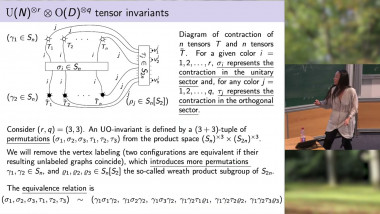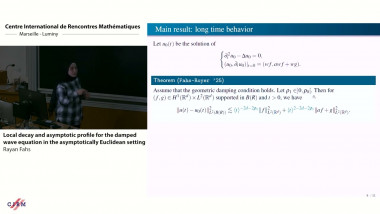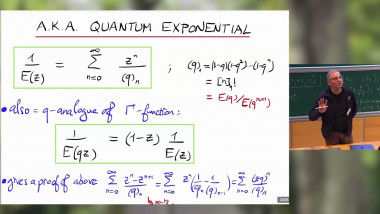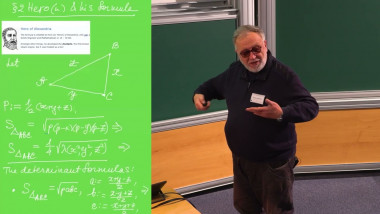Appears in collection : 2015 - T1 - Disordered systems, random spatial processes and some applications
The wonderful evolutions of the great flocks of birds across the skies of our cities, often in aerial duel with a falcon, are both a fascinating sight, and a scientific mystery. How does the flock keep its staggering cohesion? How can it take decisions, as changing direction, or landing on a tree, as a single organism? What are the behavioural rules each animal obeys to? Some of these questions were already asked by Pliny the Elder over two thousands years ago. Indeed, science has been puzzled for a long time by the fundamental mechanisms of collective animal behaviour, not only in the case of bird flocks, but also for fish schools, insect swarms, and mammal herds. In the last fifty years, a number of theories and mathematical models formulated by biologists, mathematicians and physicists, have tried to describe these phenomena. However, it has been for a long time very hard to evaluate the correctness of these theories, because of the scarcity of experimental data. Only very recently, thanks to the development of new technologies and computer algorithms, it has been possible to obtain quantitative data on the three dimensional movement of large flocks of birds. Starlings have offered the first and most beautiful case of study. Results of these researches have been surprising, and forced scientists to rethink some of the pillars taken for granted by the previous theories. It has been discovered that each single bird interacts with only a handful of neighbors, approximately seven. And yet, the simple behavioural rule of the seven starlings grants a perfect cohesion of a flock of thousands of birds. Moreover, the data revealed the origin of the marvelous collective response of flocks, able to react as one to the attack of predators and to transfer information across the group with the sharpest efficiency. In this lecture I will illustrate the main and most recent progresses of collective animal behaviour, a cross-disciplinary field where biology, mathematics, computer science and physics meet and merge into an entire new discipline.
















